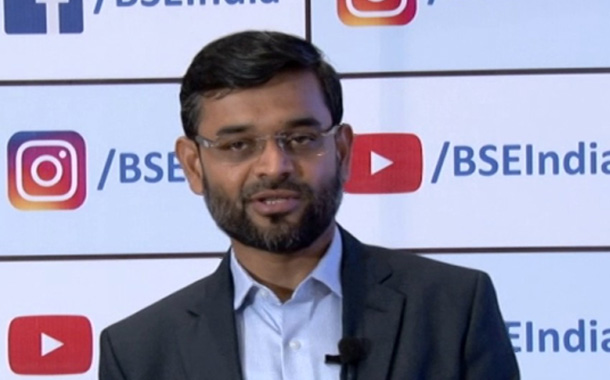India is the world’s largest sourcing destination for the information technology (IT) industry, accounting for approximately 67 percent of the US market. Most software companies are facing the crisis head-on. They have shifted emphasis to off-shore projects since the on-site software development has virtually come to a standstill. The companies that are taking the slowdown as an opportunity to reorient themselves in the new scenario are creating the foundation for a long innings in the IT sector while those that are wary about taking the hard steps will soon find the going tough.
From very humble beginnings, the Indian IT Industry has grown at an exponential rate over the past 10 years of export, fetching for India valuable foreign exchange, propping up the Indian Stock Market with its share prices reaching dizzying heights before the scam, and employing about 10 million workforce. More importantly, the industry has led the economic transformation of the country and altered the perception of India in the global economy. India’s cost competitiveness in providing IT services, which is approximately 3-4 times cheaper than the US, continues to be the mainstay of its Unique Selling Proposition (USP) in the global sourcing market.
India & IT Revolution
India became a global player in the IT revolution because of two main factors-opening up of the markets and India’s cheap and vast manpower with knowledge of English. Right from 1991 to 2000, Indian companies grew at a mind-boggling rate of 200- 500%, attracting lucrative projects from companies all over the world, especially the US. The recession that we see now is partly attributed to this phenomenal growth rate, which to be maintained, was always going to be a tough proposition. Most companies did not need any major software development. With the recession, most companies have drastically revised their organizational and marketing strategies. The share of onsite work has come down as most foreign companies prefer to sustain as much of their own employees rather than outsiders. Companies in India have now shifted gears doing off-shore development. They have started looking at the European and Japanese markets, which have not yet been affected by the slowdown. Other markets which they are tentatively eyeing are the Australian, South American and Middle East markets.
Tiding over lean phase& challenges
Most companies have decided to tide over the problem of reduced profits by resorting to layoffs and cutting down heavily on fresh recruitment. The focus on web centric software development, which used to be their prime revenue earner is a thing of the past and these companies are concentrating now on the banking and the governance sectors. Even the high-flying companies are doing the low-grade maintenance work for their clients to create good relationships in the hope of getting a big project from them sometime in the future. Despite the bravado that most software companies still put up it remains to be seen how many of the smaller ones can survive, if the recession doesn’t end soon. Fly by night operators wanting to make quick bucks from the high ratings software companies, coupled with the poor quality of support they provide, is destroying the credibility of the industry. Challenge that Indian companies are facing is that most global corporations prefer to keep the most lucrative projects for their employees and leave the crumbs for the Indians to brush up. Lack of domain expertise in talent is major issue that the industry is currently contending with, along with the withdrawal of tax benefits. Given the tough competition prevalent in the industry, there is immense pressure amongst companies to offer competitive pricing, in the recent past. Besides, Brexithas impacted the second largest market for Indian export (Britain). However, the future looks promising if we tread the path cautiously.
Future looking up
Our companies are well poised to provide the right training and have been able to continuously improve their knowledge base. They have used the new technologies effectively, winning customer satisfaction and are equipped with a sound experience in dealing with foreign customers, who are very quality conscious. The recession is on its way out. The markets are looking up. To be realistic, the software industry is going to stabilize at this point, but opportunities will beckon soon.
India is the topmost off shoring destination for IT companies across the world. Having proven its capabilities in delivering both on-shore and off-shore services to global clients, emerging technologies now offer an entire new gamut of opportunities for top IT firms in India.
Indian IT’s core competencies and strengths have attracted significant investments from major countries. Leading Indian IT firms are diversifying their offerings and showcasing leading ideas in blockchain, artificial intelligence to clients using innovation hubs, research and development centers, in order to create differentiated offerings.
Social, Mobility, Analytics and Cloud (SMAC) are collectively expected to offer greater opportunities. Cloud represents the largest opportunity under SMAC, increasing at a CAGR of approximately 30 percent by 2020. The social media is the second most lucrative segment for IT firms. The Indian e-commerce segment is witnessing strong growth, thereby offering another attractive avenue for IT companies to develop products and services, to cater to the high growth consumer segment.The IT industry has also created significant demand in the Indian education sector, especially for engineering and computer science.
The Indian government’s ‘Digital India Initiative’ is a $ 1 trillion business opportunity, offering great potential to the domestic IT/ICT sector. In addition, the prospects presented by the ever expanding IT security market & Internet of Things (IoT) is expected to be vast.
By: Aslam Khan, Chairman, MD and CEO, Octaware Technologies




